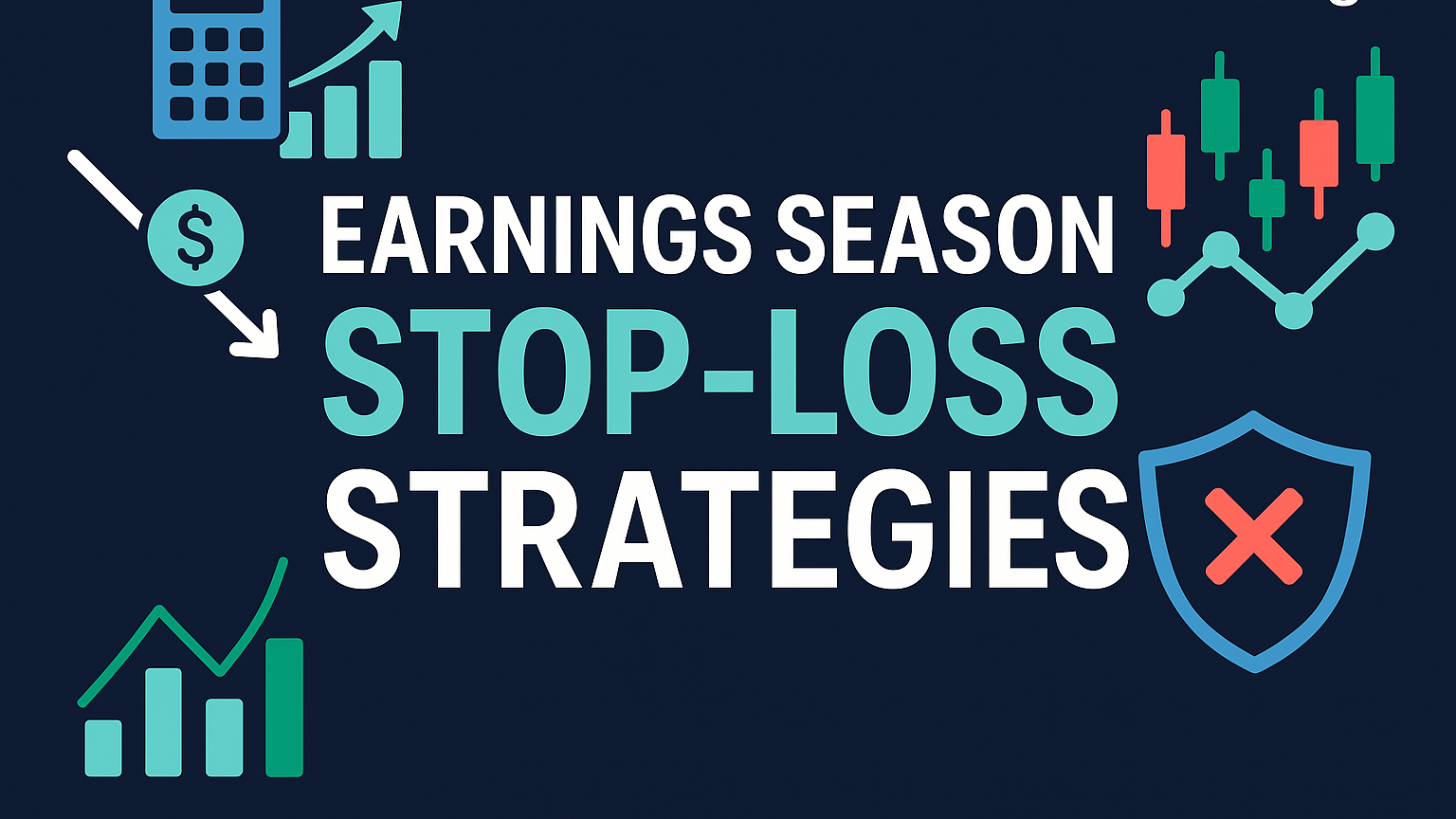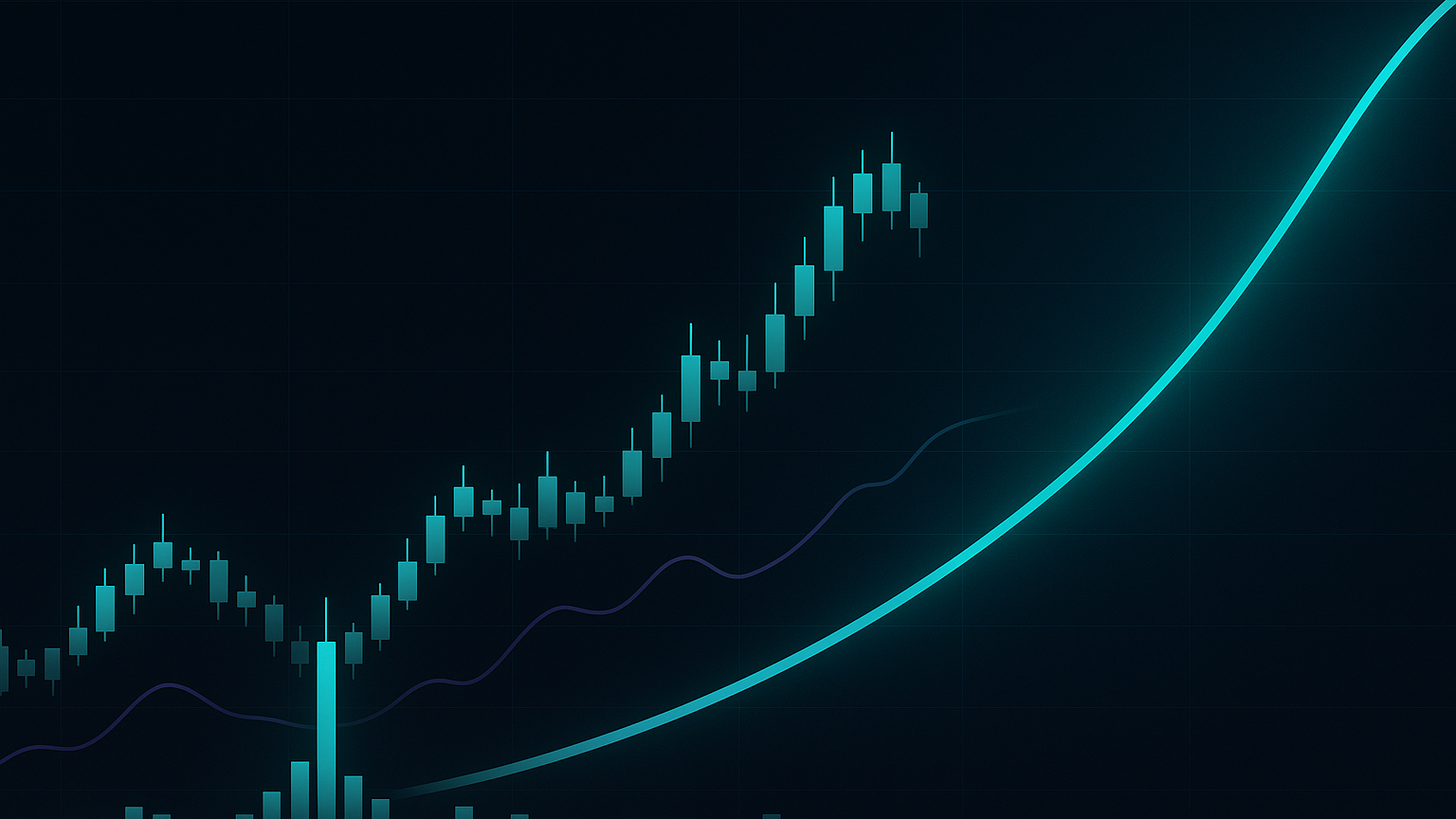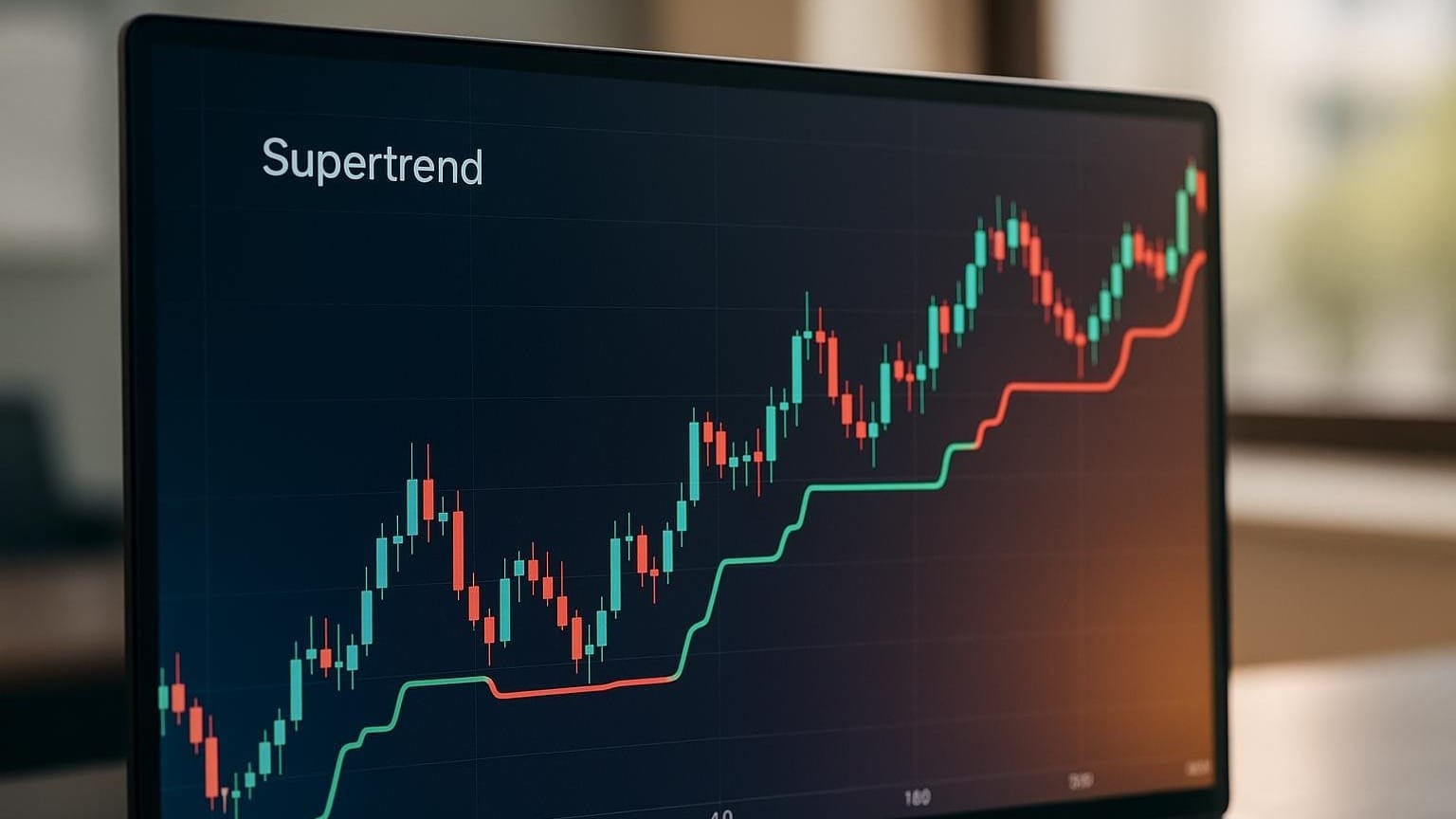Learn how to effectively use Sharpe and Sortino ratios to evaluate trading strategies and manage risks in volatile markets.
In trading, returns alone don’t tell the full story. The Sharpe and Sortino ratios help you evaluate performance by balancing returns with the risks taken. Here’s what you need to know:
- Sharpe Ratio: Measures risk-adjusted returns using total volatility. Best for stable markets and low-risk strategies.
- Sortino Ratio: Focuses only on downside risk, making it ideal for volatile markets or assets.
Both ratios are essential tools for traders and investors to compare strategies, manage risk, and improve performance. Use tools like TradingView or LuxAlgo for quick calculations and insights, and combine them for a complete picture of risk-adjusted returns.
Understanding Sharpe and Sortino Ratios
Sharpe Ratio Explained
The Sharpe Ratio measures how well returns compensate for the risks taken, by comparing excess returns to overall volatility. A higher Sharpe Ratio suggests better performance relative to risk [1]. For example, if your trading strategy delivers a 15% annual return with a standard deviation of 10%, and the risk-free rate is 3%, the Sharpe Ratio is calculated as (15% - 3%) / 10% = 1.2. This means you're earning 1.2 times the excess return for every unit of risk.
Unlike the Sharpe Ratio, which considers all volatility, the Sortino Ratio hones in on downside risk.
Sortino Ratio Explained
The Sortino Ratio zeroes in on negative volatility, making it a sharper tool for analyzing risk in uncertain markets [2]. By focusing only on harmful fluctuations, it provides a clearer picture of downside risk, especially in volatile environments.
Both ratios compare excess returns to risk, but their formulas differ slightly:
Sharpe Ratio = (Rp - Rf) / σ
Sortino Ratio = (Rp - Rf) / σd
Where:
- Rp = Portfolio return
- Rf = Risk-free rate
- σ = Standard deviation of returns (total volatility)
- σd = Downside deviation (negative volatility only)
Differences Between Sharpe and Sortino Ratios
| Aspect | Sharpe Ratio | Sortino Ratio |
|---|---|---|
| Risk Measure | Total volatility (up and down) | Downside volatility only |
| Best Use Case | Low-risk strategies | High-volatility portfolios |
| Market Conditions | Stable markets | Uncertain or turbulent markets |
| Risk Assessment | Penalizes all volatility | Focuses on harmful fluctuations |
For traders, both ratios serve distinct purposes. The Sharpe Ratio is ideal for evaluating performance in calm, steady markets, while the Sortino Ratio is more practical when guarding against losses in unpredictable conditions [4].
How to Calculate Sharpe and Sortino Ratios
Steps to Calculate the Sharpe Ratio
To calculate the Sharpe Ratio, you'll need three things: the average investment return, the risk-free rate, and the standard deviation.
- Find the average returns for your investment over a specific period. Then, identify the risk-free rate, such as the current T-bill rate, adjusted for the same timeframe.
- Determine the volatility of your returns by calculating the standard deviation. You can use tools like Excel or trading platforms to do this automatically.
Steps to Calculate the Sortino Ratio
- Start by calculating the average returns for your chosen timeframe.
- Focus on the downside deviation - this involves calculating the volatility of only the negative returns. For example, if your monthly returns are +4%, -2%, +3%, -1%, and +5%, you'd only use -2% and -1% in this step.
Once you're comfortable with the manual calculations, using tools can help streamline the process and improve accuracy.
Tools for Calculating Ratios
Manual calculations are great for learning the basics, but tools can save time and reduce errors when dealing with actual trading scenarios.
| Tool | Features | Best For |
|---|---|---|
| TradingView | Real-time calculations, charts | Active traders |
| Excel | Custom formulas, historical data | Hands-on calculations |
| LuxAlgo | Advanced indicators, AI analysis | Professional traders |
"The Sortino ratio is an improvement of the Sharpe ratio, another metric that helps individuals gauge the performance of an investment when it has been adjusted for risk." - Corporate Finance Institute [5]
Keep in mind that the Sharpe Ratio works well for low-volatility assets like bonds, while the Sortino Ratio is better suited for high-volatility assets like stocks [5]. Using both can give you a well-rounded view of your trading strategy's risk-adjusted performance.
Using Sharpe and Sortino Ratios in Trading
Comparing Strategies to Market Benchmarks
The Sharpe and Sortino ratios are key tools for evaluating how your trading strategy stacks up against market benchmarks like the S&P 500. These ratios measure risk-adjusted performance, giving you a clearer picture of how well your strategy performs relative to the level of risk taken. A Sharpe or Sortino ratio above 1.5 signals strong performance, while anything below 1.0 highlights areas needing improvement. Start by comparing your strategy to these benchmarks, then focus on fine-tuning risk management.
Managing Risk with These Ratios
When used together, the Sharpe and Sortino ratios offer a more detailed view of risk. The Sharpe ratio evaluates overall stability, while the Sortino ratio zeroes in on downside risk - helping you address specific vulnerabilities. Relying on just one ratio can leave gaps in your analysis, as each sheds light on different aspects of performance [3].
Improving Strategies with Sharpe and Sortino Ratios
Once you've calculated these ratios, use the insights to refine your trading strategies. Analyze performance across different timeframes, apply the Sharpe ratio to lower-volatility assets, and use the Sortino ratio for assets with higher volatility. Rebalancing your portfolio can also help reduce exposure to significant downside risks [5]. Look for consistent return patterns to guide your adjustments.
To make this process easier, automated tools like LuxAlgo can handle ratio calculations and provide real-time insights. These tools simplify risk management and help you adapt your strategies as market conditions evolve.
Using Trading Tools with Sharpe and Sortino Ratios
How LuxAlgo Can Help

LuxAlgo's Backtesting Assistant and screener tools simplify Sharpe and Sortino ratio analysis. These tools help traders assess strategies and pinpoint assets that meet specific risk-return criteria. With the Pro Toolkits, traders can also examine price action patterns while keeping an eye on risk-adjusted returns. This setup minimizes emotional decision-making and ensures choices are guided by solid risk metrics.
Using TradingView for Analysis

TradingView, integrated with LuxAlgo, enhances risk-return analysis by blending customizable charts with real-time ratio calculations. It displays Sharpe and Sortino ratios alongside price trends, helping traders see how market conditions align with risk-adjusted performance. This is especially useful for high-volatility assets, where the Sortino ratio’s emphasis on downside risk becomes critical. For steadier assets like bonds, TradingView’s robust charting tools allow traders to utilize the Sharpe ratio’s balanced perspective effectively.
AI Tools for Risk Analysis
AI-powered tools are transforming how traders assess risk-adjusted returns. The LuxAlgo AI Backtesting Assistant provides strategies with a range of ratios, including Sharpe and Sortino. This gives traders flexible insights into different risk-reward scenarios, helping them tailor approaches based on asset class and market conditions.
Beyond calculations, AI tools offer pattern recognition to identify market conditions where strategies have excelled based on their risk metrics. These tools promote disciplined risk management and allow traders to adjust strategies as needed. By automating complex tasks and delivering real-time insights, they let traders concentrate on refining their strategies instead of manual number-crunching.
Platforms like LuxAlgo and TradingView, combined with AI-driven tools, create a powerful system for using Sharpe and Sortino ratios effectively. With these resources, traders can fine-tune their approaches and maintain strong risk management for more consistent results.
Conclusion and Tips for Traders
Key Takeaways
Sharpe and Sortino ratios are essential tools for assessing portfolio performance beyond just returns. The Sharpe ratio measures overall risk-adjusted returns, while the Sortino ratio zeroes in on downside risk, making it particularly useful for cautious traders.
Take the ARKK ETF as an example: it had a strong Sortino ratio in January 2021 but saw an 80% drop by late 2022. This highlights the importance of continuously monitoring these metrics to adapt to changing market conditions.
Tips for Using Sharpe and Sortino Ratios
To make the most of these ratios, traders should regularly analyze them, emphasize protecting against downside risk, and compare their strategies to market benchmarks.
| Aspect | Implementation Strategy | Key Consideration |
|---|---|---|
| Calculation Frequency | Review weekly or monthly | Markets can shift quickly, stay updated |
| Risk Management | Focus on downside protection | Sortino is ideal for managing volatility |
| Strategy Comparison | Benchmark against similar assets | Ensures fair performance evaluation |
| Tool Integration | Use advanced trading platforms | Combine with other technical tools |
Modern trading platforms like LuxAlgo and TradingView can simplify this process. LuxAlgo, for instance, offers AI-powered tools that automate ratio calculations and provide insights into strategy performance. Its backtesting features allow traders to test strategies under various market scenarios.
While Sharpe and Sortino ratios are powerful, they work best when paired with a broader trading approach. Use them alongside other technical and fundamental tools to make well-informed decisions. Platforms like LuxAlgo can help integrate these metrics into a data-driven strategy, ensuring traders have a well-rounded view of their performance.
FAQs
What Defines a Good Sharpe or Sortino Ratio?
These ratios are key tools for assessing risk-adjusted performance, though they differ in focus and application:
| Ratio Range | Performance Level | Application |
|---|---|---|
| Less than 1.0 | Needs Improvement | Strategy requires adjustments |
| 1.0 - 2.0 | Strong | Balanced risk management |
| Above 2.0 | Outstanding | High-quality risk-adjusted returns |
The distinction lies in their approach to risk. The Sharpe ratio measures total volatility, making it ideal for stable markets. In contrast, the Sortino ratio zeroes in on downside risk, which is especially useful for analyzing volatile assets [1][2].
Real-World Examples
Why does monitoring these ratios over time matter? Consider these two cases:
- ARKK ETF: Early 2021 saw strong ratios, but by late 2022, the fund experienced an 80% drop. This shows how relying on static measurements can be misleading.
- SPY ETF: With a small difference between upside and downside volatility (9.2% vs. 8.9%), the Sortino ratio proved especially insightful for assessing this high-volatility asset [3].
How to Use These Ratios
Modern trading platforms make it easier than ever to monitor these metrics. Tools like LuxAlgo offer real-time tracking, helping traders adjust strategies as markets shift. This is particularly helpful for managing volatile assets, such as cryptocurrencies, where controlling downside risk is critical.
"The Sortino ratio is an improvement of the Sharpe ratio, another metric that helps individuals gauge the performance of an investment when it has been adjusted for risk." - Corporate Finance Institute [5]








